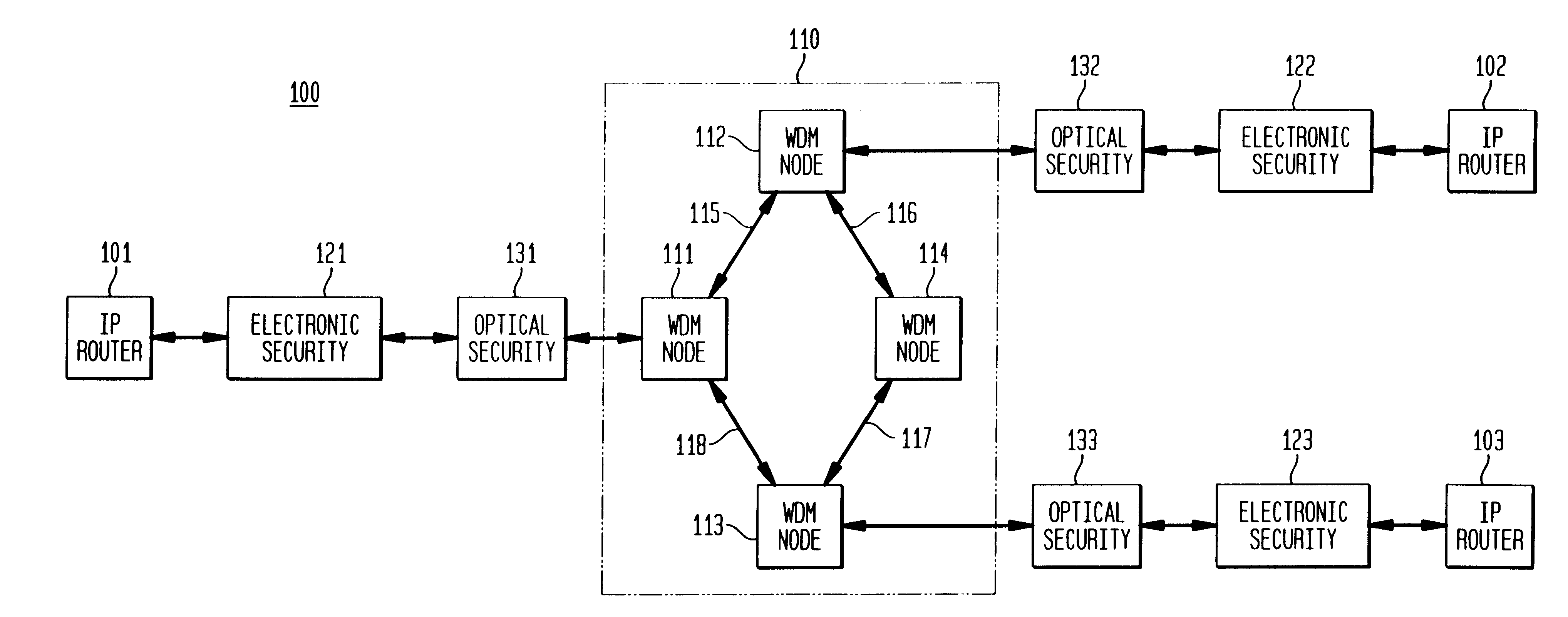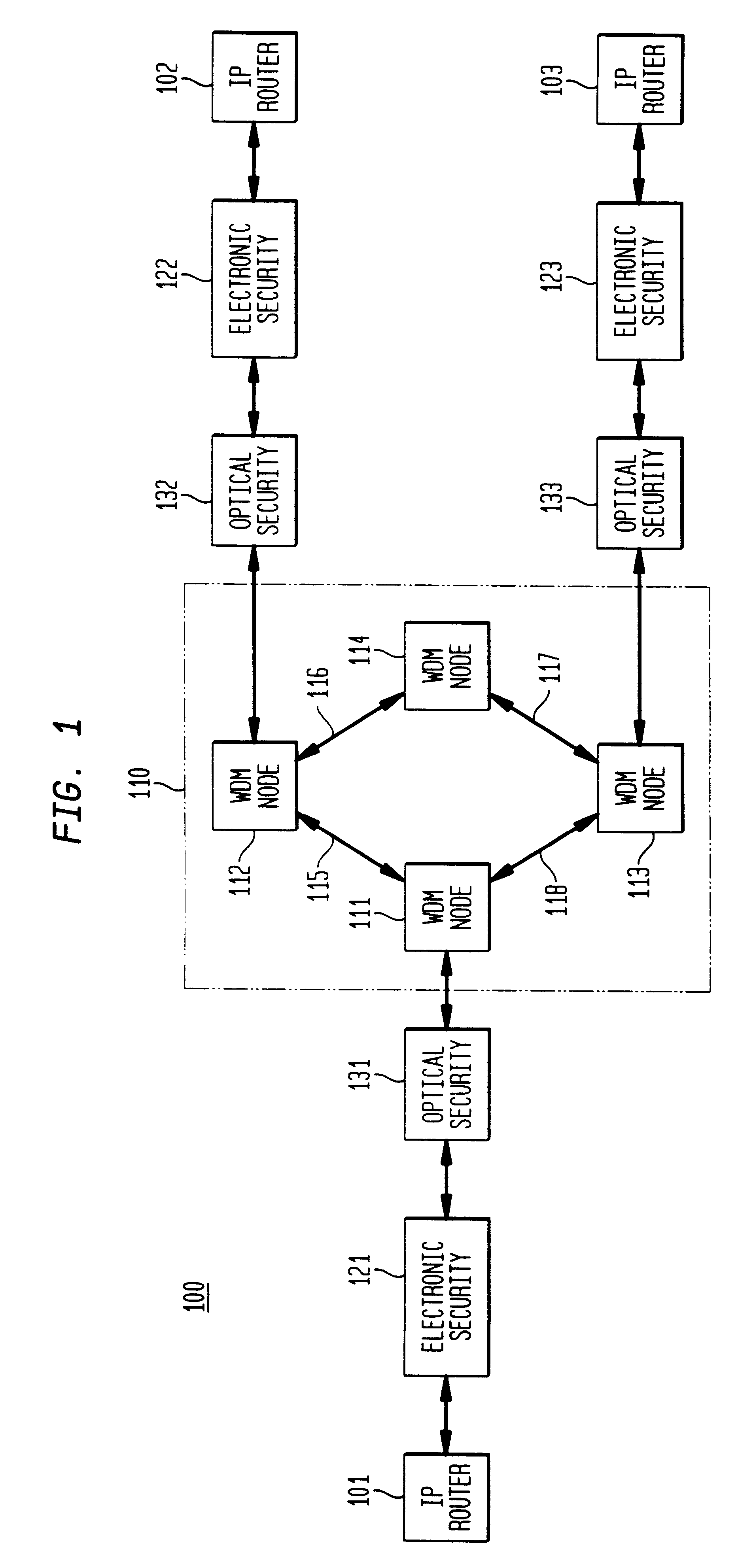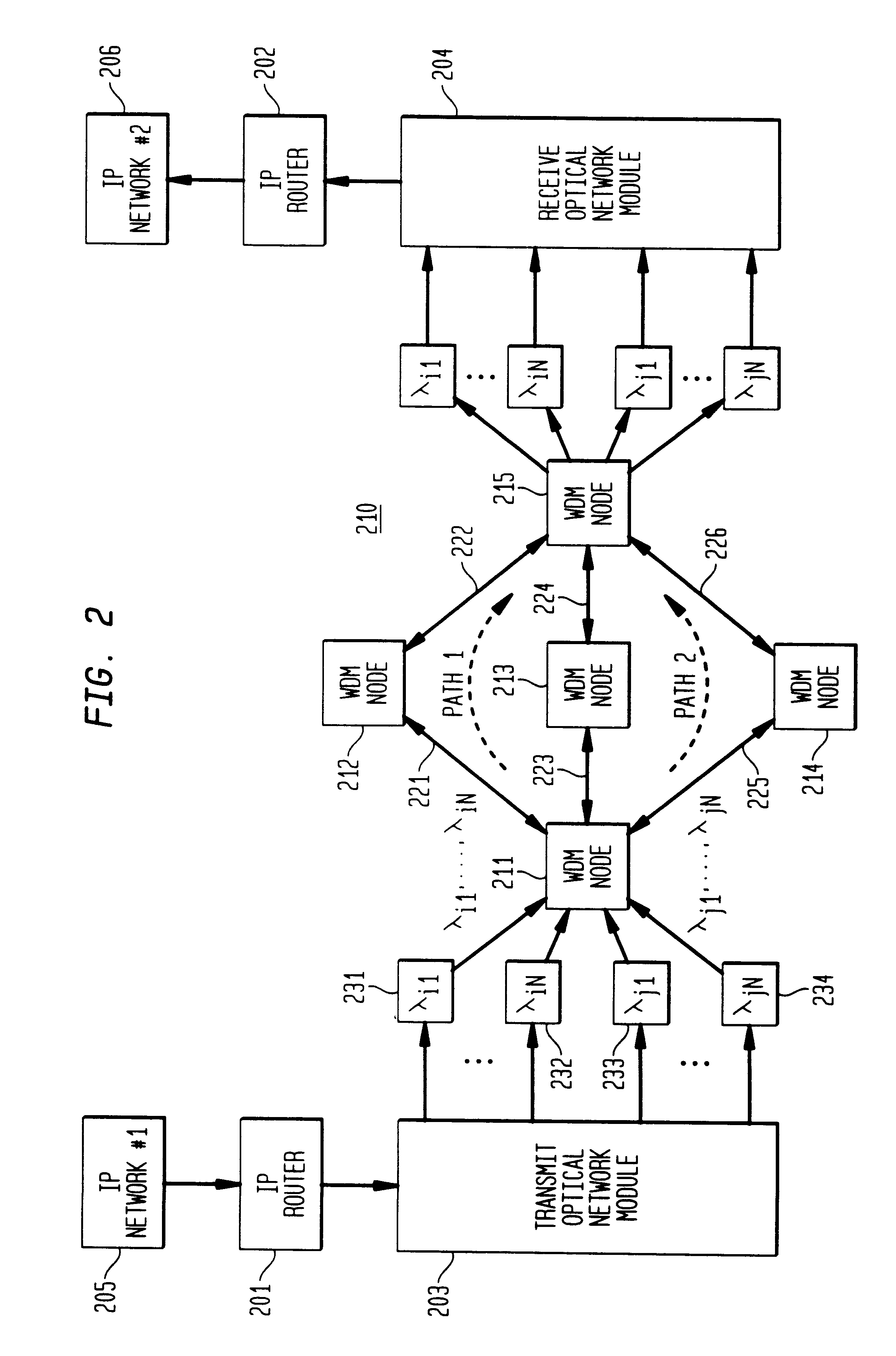Optical layer survivability and security system using optical label switching and high-speed optical header generation and detection
a security system and optical layer technology, applied in the field of secure and survivable optical systems, can solve the problems of leaking 1-10% of the optical signal (all wavelengths) outside the fiber cladding, and the difficulty of implementing a technique that is extremely difficult to implemen
- Summary
- Abstract
- Description
- Claims
- Application Information
AI Technical Summary
Benefits of technology
Problems solved by technology
Method used
Image
Examples
Embodiment Construction
An illustrative WDM circuit-switched backbone network 800 for communicating packets among end-users in certain large cities in the United States is shown in pictorial form in FIG. 8--network 800 is first discussed in terms of its conventional operation, that is, before the overlay the elements and methodology in accordance with the present invention is presented.
With reference to FIG. 8, it is supposed that New York City is served by network element 801, Chicago is served by network element 802, . . . , Los Angeles is served by network element 804, . . . , and Minneapolis by network element 807. (Network elements may also be referred to as nodes in the sequel.) Moreover, NC&M 520 has logical connections (shown by dashed lines, such as channel 521 to network element 801 and channel 522 to network element 807) to all network elements 801-807 via physical layer optical supervisory channels; there is continuous communication among NC&M 520 and network elements 801-807. NC&M 520 periodic...
PUM
 Login to View More
Login to View More Abstract
Description
Claims
Application Information
 Login to View More
Login to View More - R&D
- Intellectual Property
- Life Sciences
- Materials
- Tech Scout
- Unparalleled Data Quality
- Higher Quality Content
- 60% Fewer Hallucinations
Browse by: Latest US Patents, China's latest patents, Technical Efficacy Thesaurus, Application Domain, Technology Topic, Popular Technical Reports.
© 2025 PatSnap. All rights reserved.Legal|Privacy policy|Modern Slavery Act Transparency Statement|Sitemap|About US| Contact US: help@patsnap.com



